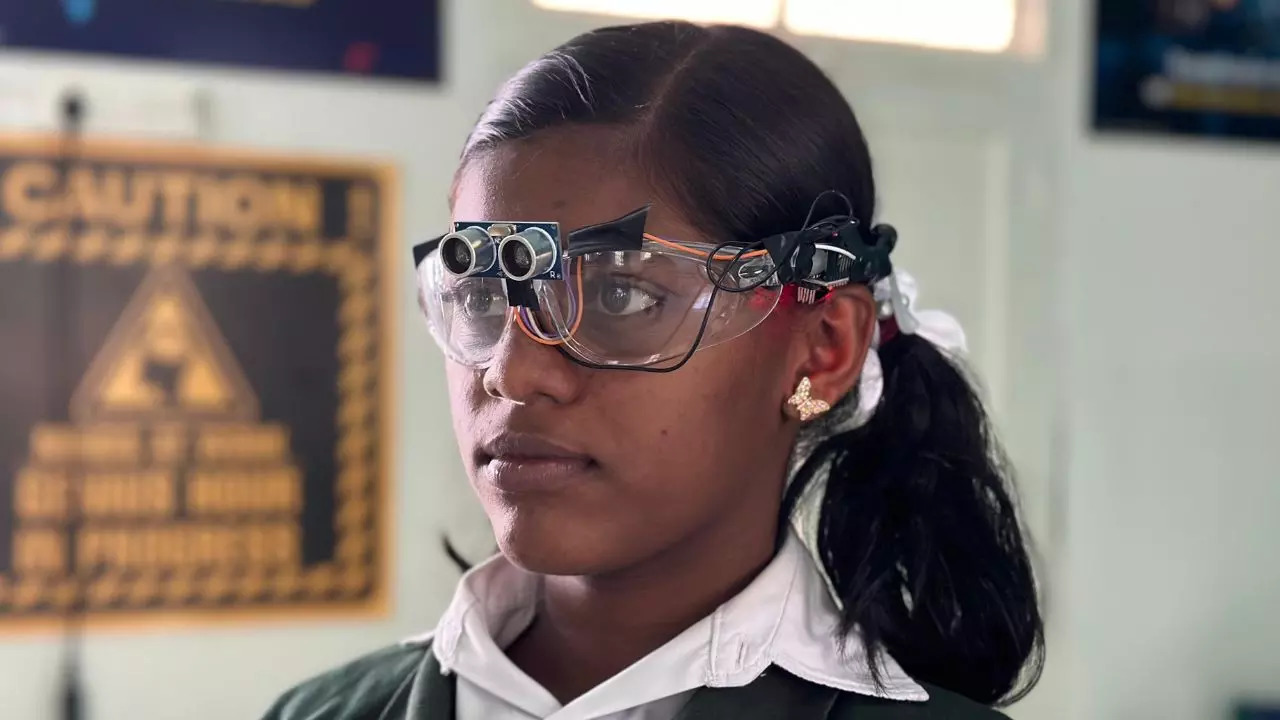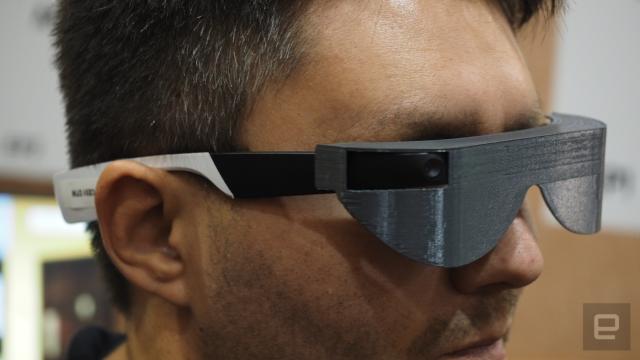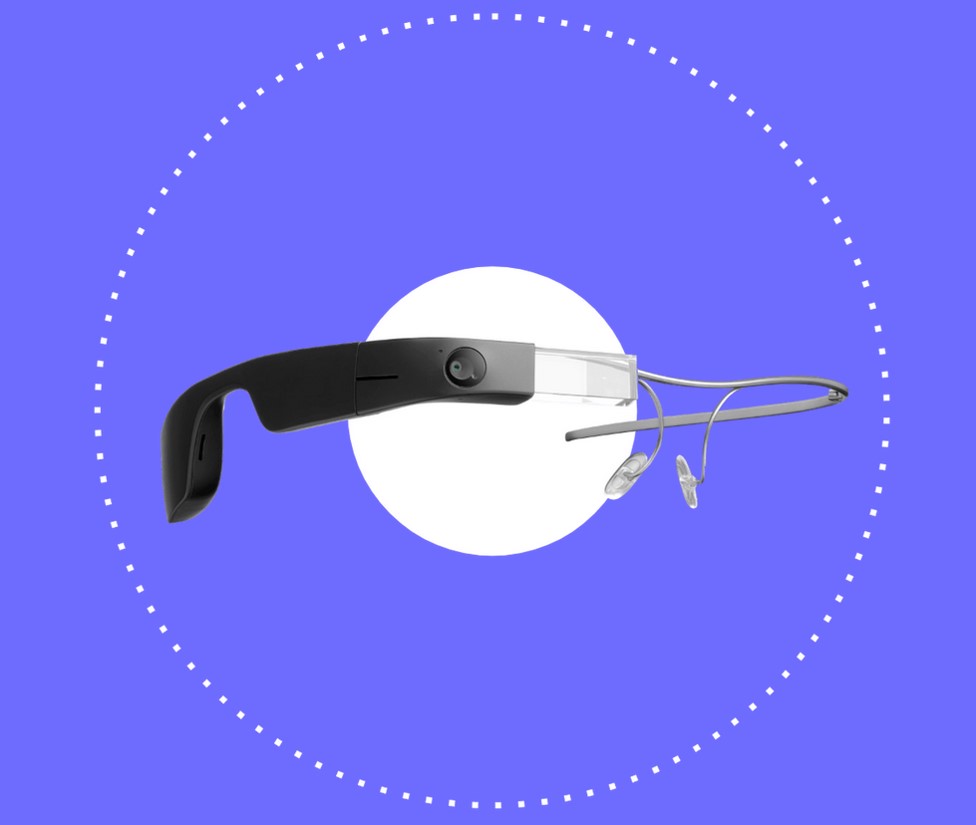Mobility Aids for Visually Impaired Users: Enhancing Independence and Navigation
Wiki Article
Discover Advanced Assistive Instruments for Individuals With Visual Impairments
The landscape of assistive technology for individuals with visual impairments is progressing swiftly, presenting an array of ingenious tools that boost autonomy and interaction. From smart glasses that effortlessly combine visual input with acoustic support to innovative navigating applications that redefine spatial recognition, these devices are reshaping opportunities.Smart Glasses Innovations
Smart glasses represent a substantial advancement in assistive innovation for individuals with aesthetic problems. Geared up with electronic cameras and sensors, smart glasses can catch real-time aesthetic details, which is after that processed and communicated to the individual via audio comments or haptic feelings.
Additionally, advancements in synthetic knowledge have additionally boosted the capabilities of clever glasses. Machine knowing formulas can acknowledge faces, checked out message, and recognize things, making them invaluable tools for daily tasks. Users can receive auditory signs that offer context about their setting, promoting self-reliance and self-confidence.
In addition, the ergonomic layout and lightweight nature of several smart glasses make them suitable for extended use, making sure comfort while enhancing performance. As these gadgets remain to evolve, they hold the prospective to revolutionize the means people with aesthetic problems experience their everyday lives, bridging the void between ease of access and technology. The recurring research and development in this area guarantee to increase the opportunities for wise glasses, making them a necessary part of contemporary assistive devices.
Navigating Apps and Devices
Countless navigation apps and tools have arised as necessary sources for individuals with visual disabilities, considerably boosting their capacity to traverse unknown environments. These technologies utilize GPS functionality, audio signs, and real-time data to give individuals with precise navigating support.One famous example is the Aira application, which connects customers to skilled representatives who can supply visual summaries of environments and navigating support through an online video clip feed. This service boosts the user's spatial understanding and self-confidence while navigating. One more significant device is Seeing Eye GPS, which provides voice-guided navigation and points of passion, making it possible for users to gain access to essential information concerning their surroundings.

As technology continues to development, the growth of a lot more innovative navigating devices promises to further empower people with aesthetic disabilities, promoting smooth wheelchair and combination right into varied atmospheres. Such advancements are important in promoting a more comprehensive culture.
Braille Technology Developments
Recently, improvements in Braille technology have dramatically changed just how individuals with visual disabilities access information and involve with the world around them. The development of mobile Braille displays has actually transformed analysis by permitting users to link wirelessly to mobile phones, computer systems, and tablet computers. These tools convert message right into Braille in real-time, making it possible for smooth communication with electronic web content.
In addition, cutting-edge Braille printers have arised, boosting the production of tactile materials. Modern embossers are faster and more effective, enabling for the fast development of Braille files and educational materials. This efficiency reduces the moment and price related to creating Braille resources, making them more obtainable to organizations and colleges.
In addition, the combination of Braille with other innovations, such Voice-activated assistive devices as synthetic intelligence and maker understanding, has opened brand-new avenues for personalized understanding experiences. Voice acknowledgment and synthesis technologies can match Braille, offering an inclusive strategy to info dissemination.
As the demand for comprehensive education and work environment settings expands, these technological innovations play an essential duty in equipping people with visual impairments, guaranteeing they have equal accessibility to details and chances in numerous aspects of life.
Wearable Devices for Independence
A growing variety of wearable devices is enhancing self-reliance for individuals with visual problems, providing cutting-edge services that boost navigation and day-to-day living. Braille displays and notetakers. These devices use advanced modern technologies to supply real-time comments and support, promoting autonomy in various settings
Wearable innovation also consists of smartwatches that can be set with accessibility features, enabling customers to receive notifications, track their locations, or perhaps call for assistance with the touch of a button. Furthermore, some devices include expert system to evaluate the environment, offering audio descriptions of nearby things or individuals.
Voice-Activated Assistive Solutions
Leveraging voice-activated assistive solutions has actually changed the landscape of support for individuals with aesthetic disabilities, giving hands-free interaction and access to a selection of jobs. These innovations make use of all-natural language processing and fabricated intelligence to enable users to execute daily activities via easy voice commands.
Furthermore, recent advancements in voice recognition precision have actually enhanced the user experience significantly, suiting varied accents and speech patterns. This inclusivity makes sure that even more individuals can gain from these modern technologies, promoting a higher sense of freedom.
Conclusion
Finally, the advancement of innovative assistive gadgets substantially enhances the freedom and high quality of life for people with aesthetic problems. Innovations such as clever glasses, navigating applications, Braille innovation, wearable devices, and voice-activated options jointly promote a more comprehensive environment. These modern technologies equip individuals to navigate their environments with confidence and engage more fully with the world, inevitably advertising better access and equal chances for individuals facing visual difficulties.The landscape of assistive innovation for people with visual impairments is evolving rapidly, providing an array of cutting-edge gadgets that improve autonomy and engagement.Smart glasses stand for a significant advancement in assistive modern technology for individuals with visual problems. As these gadgets proceed to develop, they hold the possible to revolutionize the way individuals with visual problems experience their daily lives, bridging the void between access and innovation.In current years, innovations in Braille technology have substantially changed exactly how people with aesthetic disabilities gain access to details and engage with the globe around them. These innovations empower users to browse their environments with confidence and involve more totally with the globe, ultimately advertising higher access and equal opportunities for individuals encountering visual difficulties.
Report this wiki page